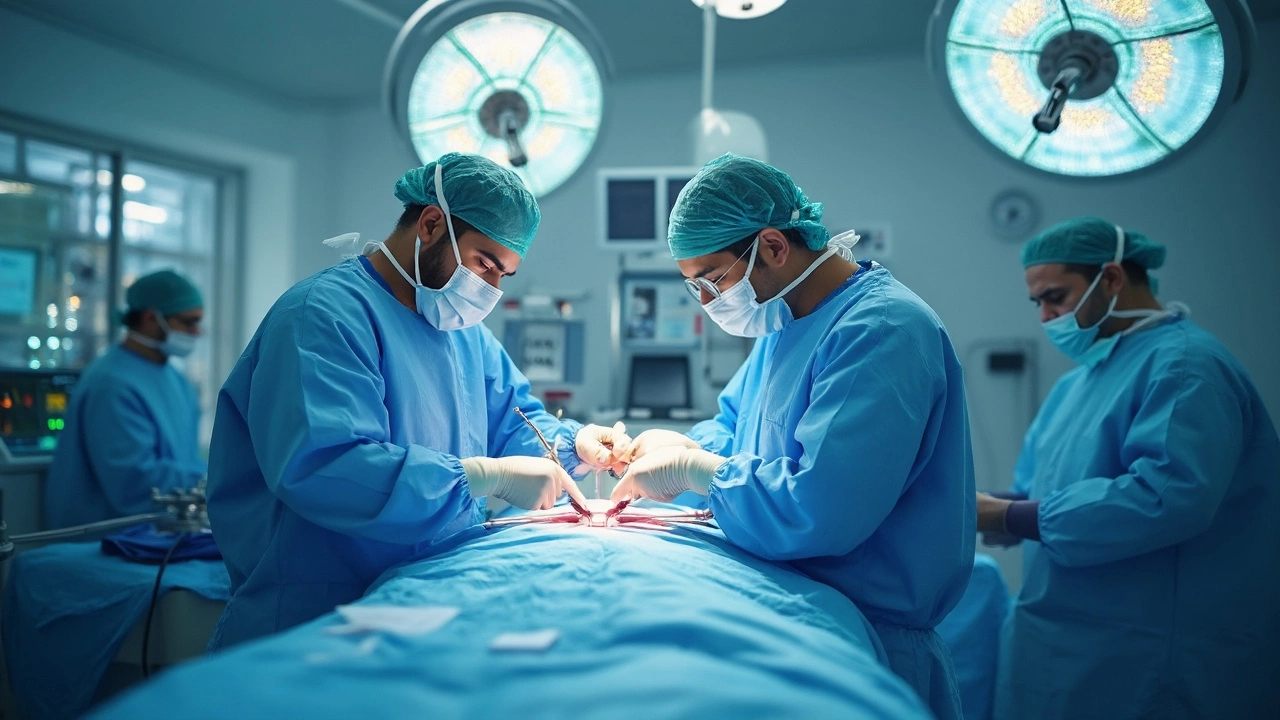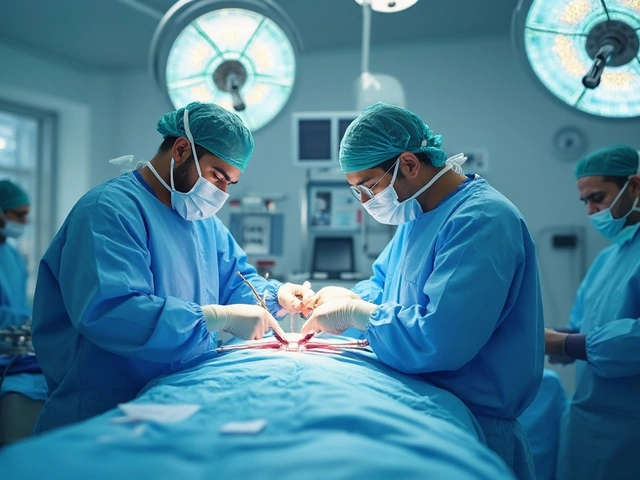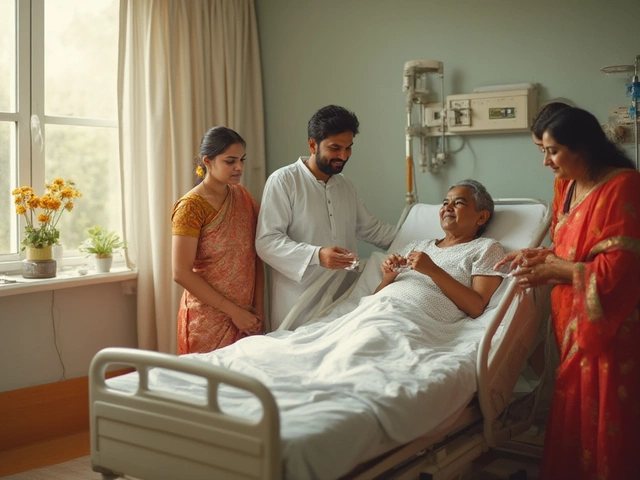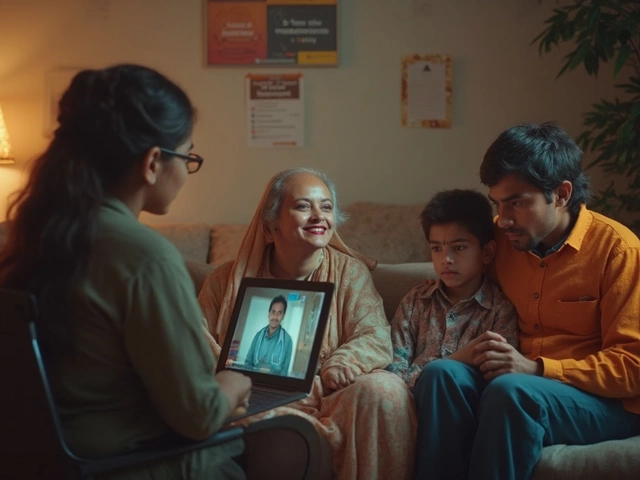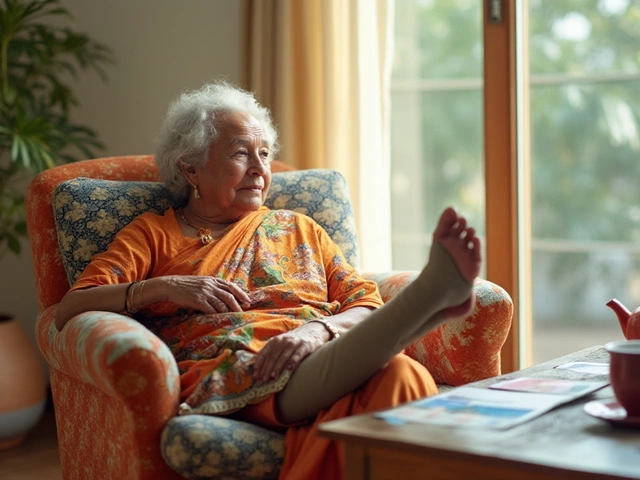Open-heart surgery can sound downright scary, right? I mean, if you've ever heard someone talk about breaking ribs just to get to the heart, you'd probably want to curl up and pretend you're made of steel. But here's the thing, it's 2025, and those days of brutal-sounding procedures are on the decline. It's high time we talk about how it's done nowadays and whether breaking ribs is really still on the menu.
First off, what's open-heart surgery? Imagine your heart needing a little TLC, like a repair or a detour around blocked arteries. Surgeons used to quite literally crack open the chest to get things done. Talk about tough love! But, not all surgeries involve snapping your ribs anymore. Surgeons have got a whole range of tools and techniques that make you feel like you've traveled to the future, even though we're very much in the present.
- Understanding Open-Heart Surgery
- Do Ribs Still Get Broken?
- Modern Surgical Techniques
- Recovery and Care Post-Surgery
- Future of Heart Surgery
Understanding Open-Heart Surgery
Picture this: your heart's like the engine of your car, except way more vital, and sometimes it needs a little fix-up. That's where open-heart surgery comes into play. It's done when there's something wrong that can't just be patched up with medication or tiny non-invasive tweaks. Think of it as a more detailed intervention, like a heart makeover.
Originally, open-heart meant surgeons had to open up the chest, and yes, that sometimes involved breaking ribs to get there. But don't freak out just yet. Today, with advancements in surgical methods, that hardcore stuff happens way less often.
This type of surgery can be for various reasons:
- Coronary Artery Bypass Grafting (CABG): Often referred to as 'bypass surgery', this is for those poor blocked arteries around your heart, creating a new path for blood to flow.
- Valve Repair or Replacement: Fixing or swapping out those little heart valves that aren’t doing their job right.
- Aneurysm Repair: Fixing areas where the walls of the heart balloon out dangerously.
Surgeons use a heart-lung machine during many of these procedures. Sounds intimidating, right? It's like a life-support system, temporarily taking over the role of your heart and lungs while the surgery goes on. This allows your heart to be safely operated on without all the blood flow messing up the surgeon's view.
If you're a stats kind of person, here's a cool fact: in the last few decades, survival rates for open-heart surgeries have significantly improved, reaching impressive success rates of over 95% for many procedures. That's like getting a gold star from your doctor!
In the end, while open-heart surgery might still sound intimidating, knowing what it involves and how much things have improved can ease a lot of those fears. It's all about fixing that ticker of yours and getting it back into optimal shape!
Do Ribs Still Get Broken?
You know, the whole idea of breaking ribs for heart surgery is more of an old-school thought. Sure, it was the norm back in the day because the focus was on getting direct access to your heart. But as it turns out, that method can be pretty harsh on the body. So, in recent years, there's been a shift to less invasive techniques.
In many modern heart surgery procedures, the real goal is to minimize trauma to your ribcage. Think of it like this: instead of breaking ribs, surgeons now prefer to go between them or use smaller incisions. It's a bit like being a careful burglar, sneaking in without breaking anything.
If you're going in for a coronary artery bypass, for instance, the surgeon might use a method called 'minimally invasive direct coronary artery bypass' (MIDCAB). Sounds fancy, right? But it just means they make a small cut between the ribs without snapping them apart. It's all about being gentle and efficient.
Some surgeries might still involve cutting the breastbone, but that's more of an exception than a rule these days. Even then, they use techniques that help the bone heal faster. So, while the idea of broken ribs used to be front-page news for open-heart surgery, it's slowly fading into the background as a less common occurrence.
And how about recovery? Less invasive techniques mean shorter hospital stays and quicker recovery times. So, next time someone brings up the horrors of rib-breaking surgery, you can tell them it’s more of a vintage thing now.
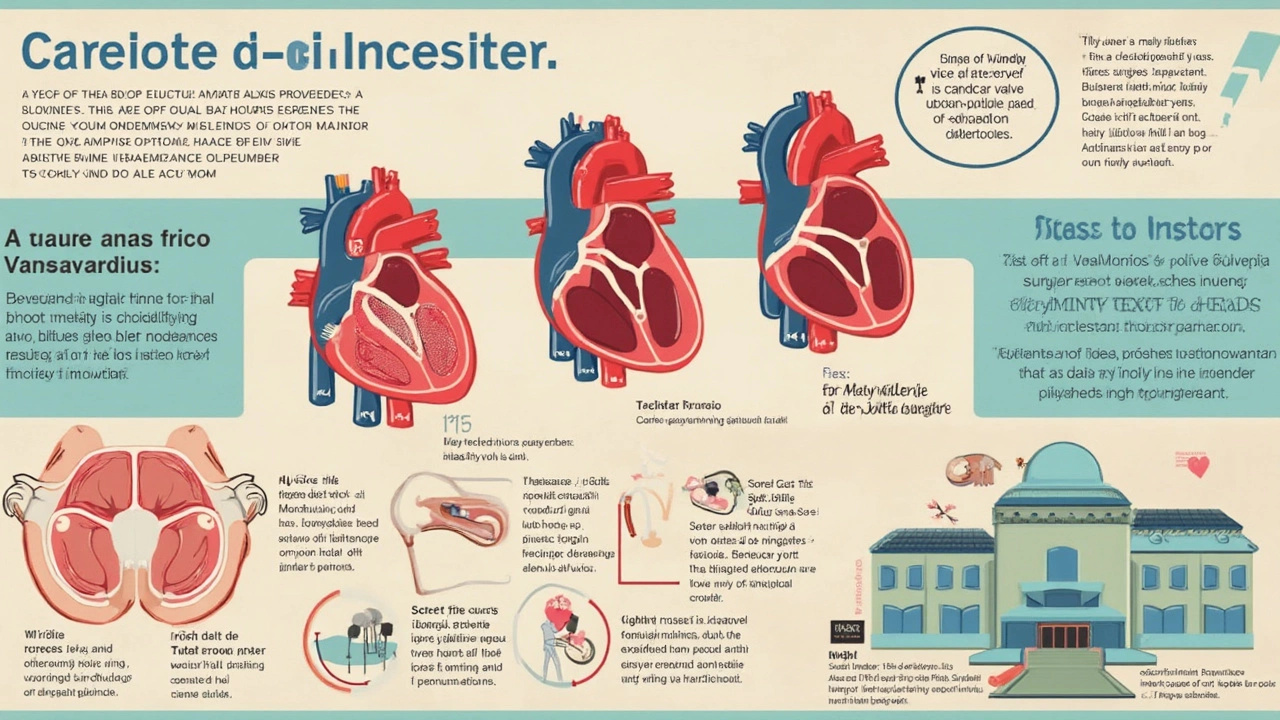
Modern Surgical Techniques
Gone are the days when surgeons routinely needed to break your ribs for open-heart surgery. Now, we're talking finesse and precision, thanks to some amazing advancements in the medical world. Let’s delve into some of these techniques.
For starters, many surgeries are performed using minimally invasive procedures. This means smaller cuts and the use of special tools that go between the ribs instead of cracking them open. Minimally invasive doesn't just sound kinder, it generally means a quicker recovery and less pain post-surgery. Who wouldn't want that?
Then there's robotic-assisted surgery. Imagine a surgeon commanding a robot with precision that human hands can't even dream of. These robots follow the surgeon’s exact movements but with more steadiness and less chance of human error. This has been a game-changer in complex cases like valve repair or coronary artery bypass.
We can’t forget about endoscopic methods either. Here, a camera guides the surgeon through a tiny incision. Think of it as the less dramatic cousin of the traditional chest-opening approach. It's especially handy for specific heart surgeries, allowing surgeons to operate without cracking anything open.
And because we're living in the age of tech, 3D imaging has also stepped up the game. Before a single incision is made, surgeons can see a 3D map of your heart, helping them plan the exact steps needed with clear direction and avoid messing with the ribs more than necessary.
All these techniques make modern heart surgery a lot more efficient and safer. As these innovations keep rolling out, it’s only going to get better. So, if you're headed into surgery, ask your doctor about these options. Less trauma means not just fewer scars on your chest, but a faster recovery too. Sounds pretty good, doesn’t it?
Recovery and Care Post-Surgery
So, you've gone through open-heart surgery—now what? You're probably curious about how to bounce back and start feeling like yourself again. The recovery journey is super important, and while it might take some time, it's all about taking the right steps. Here’s how you can help yourself along the way.
First up, let’s talk about immediate post-surgery care. Once you're out of the operating room, you'll usually spend some time in the ICU so doctors can keep a close eye on your progress. It's kind of like being in a VIP lounge, except with more monitors and fewer refreshments!
When you’re stable, you’ll probably move to a regular hospital room. The focus will be on keeping you comfortable as you heal. And once you're discharged, the real work begins at home.
- Follow Your Doctor’s Orders: This is the golden rule. If your doctor says avoid lifting anything heavier than a milk carton, take it seriously!
- Stay Active, Gradually: While you won't be running marathons anytime soon, gentle walks are great. Think of it as giving your heart a little pep talk with each step.
- Watch Your Diet: Eating heart-healthy foods isn't just a suggestion—it's mandatory. Swap out the greasy goodies for something green and lean. Your heart will thank you.
- Manage Your Meds: You might be on medication to help your heart heal and prevent infections. Setting up reminders on your phone can help you keep track.
It’s also vital to watch for signs that something might be off. If you experience increased pain, signs of an infection, or any other unusual symptoms, give your medical team a call without delay. It's better to be cautious than regretful later.
Recovering from heart surgery can be a bit of a slog, but with patience, support, and the right habits, you’ll be back on your feet in no time. And who knows? You might come out of it healthier and more energetic than before.

Future of Heart Surgery
Fast forward a few years, and you won’t even recognize heart surgery as we know it today! Thanks to tech wizardry, the days when open-heart surgery meant cracking open ribs are becoming a thing of the past. So what's the magic that's coming our way?
For starters, robotic-assisted surgery is stepping up the game. These nifty machines might not remind you of your favorite sci-fi robot, but they sure make surgeries less invasive. With tiny instruments and super-precise moves, surgeons can now perform complicated procedures through small incisions — that's definitely a win for faster recovery times.
And let's not forget about minimally invasive techniques, like transcatheter aortic valve replacement (TAVR). This method allows surgeons to fix heart valves without traditional surgery. They can thread a catheter through a blood vessel to the heart, which means less hospital time for you and more time munching on your favorite snacks.
Besides the tools of the trade, imaging technology is getting some serious upgrades too. Advanced imaging helps surgeons see your heart clearer than ever. It's like having an HD view inside your body, allowing for better diagnoses and decisions. Cutting-edge imaging can even help tailor surgeries to your needs. Fancy, right?
Then there's the role of artificial intelligence. AI is not only for movies with robots taking over the world; in heart surgery, it's helping in predicting complications and planning surgeries more effectively. It's like having an assistant that does the heavy brainwork — so the surgeon can focus on doing what they're best at.
You might even catch talk about heart patches. Yep, you read that right. Scientists are working on bioengineered patches that can patch up heart damage without major incisions. Imagine a future where your doctor says, "We'll just pop on a patch." Sounds a bit futuristic, doesn't it?
All in all, the future of heart surgery is zooming towards less invasive and more patient-friendly techniques. With each advancement, we're moving closer to a world where heart surgery doesn't just save lives but does so with less drama and quicker recoveries.
